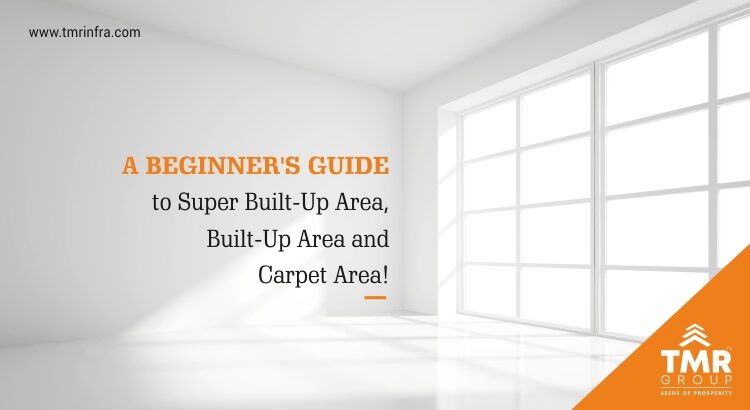Investing in real estate is momentous and life-altering event, so there’s utmost importance for well-planned decisions. Ever since the pandemic started, it led to the entire world shielding themselves in their respective homes and people got tired of having limited space which gave rise to strong demand for spacious homes and investment options. The real estate market has yet again begun to recover from the impact of the first and second lockdown thanks to the rising demand for spacious options and the buyer now has a preference for ready possession real estate options due to the possibility of yet another lockdown that would halt the progress of under-construction projects.
What is carpet area & how is it calculated?
It is the area that is used when you want to spread a carpet in the house or it is the net usable area of the apartment. The thickness of the internal wall is included in the carpet area but it excludes the area occupied by the balcony or terrace. In technical terms, the distance between the inner walls of a home is the carpet area. The staircase will be included if it is inside the apartment, but the balcony, lift, lobby, etc. will not be included in the carpet area.
There are several ways of calculating carpet area and you should know that carpet area is 70% of the built-up area. For example, assuming that the built-up area is 1,000 sq. ft then your carpet area is equal to 700 sq ft.
What is built-up area & how is it calculated?
In layman’s terms, the built-up area of a home is the carpet area plus the total area covered by walls. It includes balconies, terraces, mezzanine floors, and other detachable habitable areas such as servant rooms, etc. It’s important to know that the walls which are shared with other units are factored in at 50% while other walls are computed fully.
In a purely logical sense, the built-up area is the sum of the carpet area and the areas covered by walls, and in general, it is 10-15% more than the carpet area.
Suppose, areas covered as dry balconies, terraces add up to 10% of the built-up area while the usable or carpet area is just 70% of the built-up area. So, if the built-up area is 1,000 sq ft, it implies that 300 sq ft. of the total area is not usable and 700 sq ft is the carpet area.
What is a super built-up area & how is it calculated?
Super built-up area is the built-up area in addition to the proportionate share of the common spaces such as entrance lobby, corridors, staircases, lift shafts, lift lobby, generator rooms, clubhouse, security room, and the other common areas within the complex.
The underground sump, water tanks, walkways, swimming area, open sports facilities, weather sheds, inaccessible flower beds, lofts shall not include within the super built-up area.
Since super built-up area factors in the common areas such as elevator, veranda, clubhouse, etc., the developers consider 1.25 as the multiplying factor to calculate super built-up area and this increases the total saleable area by 25%. This percentage is called loading and few developers tend to quote loading figures while computing saleable area. So, if the carpet area is 600 sq ft, the builder adds a loading of 30%, you have to pay for 780 sq ft in total while using just 600 sq ft.
At TMR Group, we offer spacious HMDA and DTCP approved plots for sale in Hyderabad. The well-planned gated communities are replete efficient amenities in well-connected locations with seamless connectivity which promises a higher potential for improved ROI making TMR an ideal choice. Check out our projects at www.tmrinfra.com and get in touch with us!
